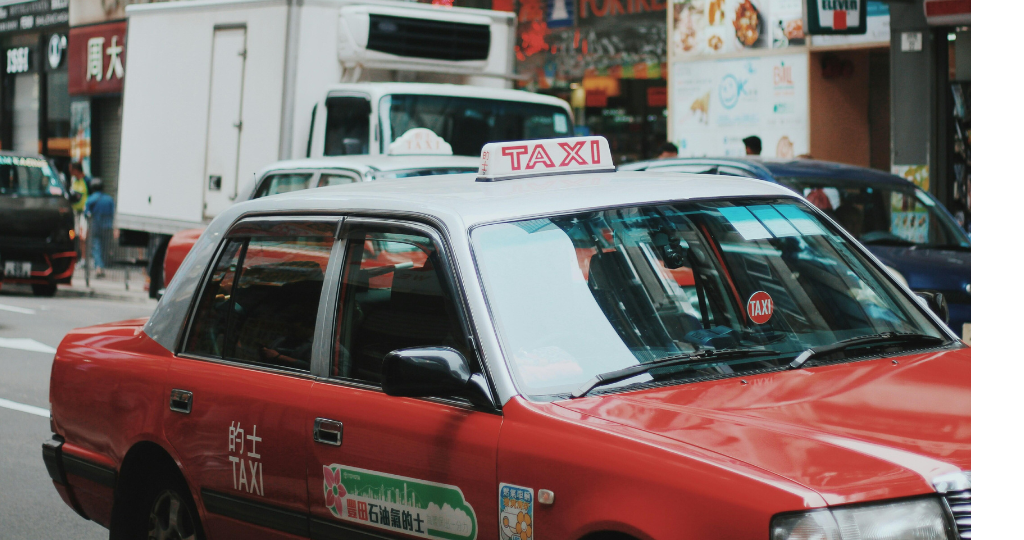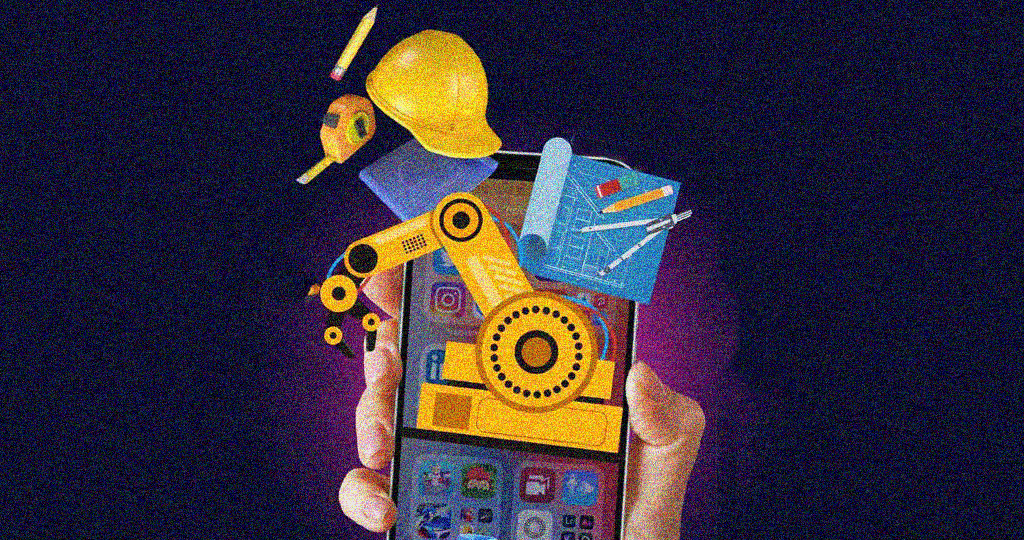We all remember the days when we had to stand in the scorching heat or cold, waiting for a cab to pass by to get a ride. But when online taxi apps came to the market in the UAE, getting a cab ride became so easy. One such popular and most loved ride-hailing app among them is Uber.
Launched in 2009, Uber's journey from a small startup in San Francisco to a global powerhouse is nothing short of remarkable. Today, Uber operates in over 900 metropolitan areas worldwide, providing millions of rides each day. In Dubai, Uber has become a key player in the transportation sector, with thousands of drivers and users relying on the app for their daily commute. According to recent statistics, Uber accounted for over 25% of the ride-hailing market in Dubai by the end of 2023. In this blog, we will get into the mobile app strategies that Uber has implemented to offer an amazing user experience, which helps retain and attract more customers to their company.
Key Takeaways
Uber's success in the UAE is rooted in its ability to customize services to local needs, offering features in both English and Arabic.
Implementing safety features like real-time GPS tracking and emergency assistance buttons builds user trust and satisfaction.
By accommodating diverse payment preferences including cash, Uber ensures convenience for all users.
Developing a clone app like Uber demands strategic market research and advanced technology to ensure user satisfaction, offering a cost-effective entry into the market.
The Uber Success Story
Uber's story began in 2009 when Garrett Camp and Travis Kalanick conceptualized a solution to the long problem of finding a taxi at ease. Their idea was simple, an app that connects riders with drivers at the touch of a button. This concept quickly gained traction, leading to the official launch of the Uber app in 2010 in San Francisco. The seamless experience of hailing a ride, tracking the driver’s location, and cashless payments struck a chord with users, providing Uber with rapid growth.
By 2011, Uber expanded to New York City, and soon after, it began its international journey, starting with Paris in 2011. The company's expansion strategy saw it entering new markets across Europe, Middle East, Asia, and Latin America. Despite facing regulatory challenges and stiff competition, Uber continued to innovate and adapt to local markets, solidifying its presence globally.
Today, Uber is more than just a ride-hailing app. It has diversified into various services, including UberEATS, Uber Freight, and even autonomous vehicle research. With millions of active users and drivers, Uber has transformed urban mobility, making it easier and more convenient for people to move around cities.
Best App Strategies that made Uber a Success Story in the UAE
In the UAE, Uber has successfully adapted its global strategies to cater to the unique demands of the Middle East region. Here are eight app strategies that have contributed to Uber’s success in the UAE:
1. Localized Features
Uber has really nailed it when it comes to making their app user-friendly for their customers in the UAE. They offer services in both English and Arabic, which is super handy. Their customer support speaks your language. By localizing the app, Uber makes it a breeze for both residents and tourists to get around. It’s these thoughtful initiatives that really enhance the user experience.
2. Safety Features
Safety is a big deal for Uber, especially in the UAE. They’ve got real-time GPS tracking so you can always see where your ride is. There’s an emergency assistance button if you ever need it, and they do thorough background checks on all their drivers. These features really give users peace of mind, knowing that Uber puts their safety first.
3. Innovative Payment Solutions
Uber has done a fantastic job catering to the diverse financial preferences of people in the UAE. You know how some of the UAE citizens prefer using credit cards while others stick to cash? Well, Uber has thought of that. They’ve implemented a variety of payment solutions, so you’re not stuck with just one option. This is especially great for residents who aren’t keen on using credit cards for every transaction. It’s really all about making the service as accessible and convenient as possible for everyone.
It’s such a thoughtful approach, ensuring that whether you’re a tourist just passing through or a resident, you can use Uber without any payment hassles. By accommodating different payment methods, Uber ensures inclusivity and convenience for all users.
4. Sustainability Initiatives
Uber is really stepping up for sustainability in the UAE. They’ve launched UberGREEN, which uses electric and hybrid vehicles. It’s a smart move, especially for those who care about the environment. By offering eco-friendly options, Uber not only helps the UAE achieve its green goals but also draws in more users who prioritize sustainable transportation.
Imagine hopping into a ride knowing you’re reducing your carbon footprint, pretty cool, right? It’s these kinds of initiatives that show Uber’s commitment to making a positive impact. Plus, it opens up their service to a whole new group of environmentally conscious riders. Win-win for everyone and the planet!
5. Dynamic Pricing
Uber’s surge pricing is a clever strategy implemented by them to keep things running smoothly, especially during busy times in the UAE. Here’s how it works: when demand goes up, like during rush hour or big events, prices adjust to match. It might mean paying a bit more at peak times, but it also means there are enough drivers around to get you where you need to go, when you need to be there. That reliability is key to keeping users happy.
Sure, it’s understandable that higher fares might not be ideal, but knowing you can always get a ride, even when it’s hectic, makes a big difference. It’s all about balancing supply and demand to make sure Uber stays a reliable choice for everyone in the UAE.
6. Machine Learning for ETA Predictions
Uber uses advanced machine learning algorithms to provide accurate Estimated Time of Arrival (ETA) predictions. They use super smart machine learning algorithms to predict exactly when your ride will arrive. They do this by crunching tons of data of traffic patterns, where drivers are, and past trip info, the app can give you a really accurate estimate. These precise ETA predictions build trust with users. Knowing you can rely on Uber to get you there on time makes the whole experience smoother and less stressful.
7. In-App Communication System
Uber’s app features an in-app communication system that allows riders and drivers to communicate directly without sharing personal contact information. This system includes voice and text messaging, which enhances the safety and privacy of both parties. The ability to communicate easily within the app helps resolve issues quickly and improves the overall ride experience.
8. Real-Time Route Optimization
The Uber app employs real-time route optimization to determine the best routes for drivers. By using real-time traffic data and sophisticated algorithms, Uber can minimize travel time and reduce fuel consumption. This not only enhances the efficiency of the service but also improves the overall user experience by ensuring quicker rides.
How to Develop a Clone App like Uber?
As we’ve gone through Uber’s successful app strategies implemented in the UAE, you might be inspired to develop your own Uber-like app. To begin, conduct market research to understand user preferences and identify gaps in the market. Analyze competitors to find opportunities for differentiation and consider leveraging the Uber business model to create a scalable and efficient ride-hailing service.
Define the essential features your app needs, such as real-time tracking, secure payment options, and user feedback systems. Consider adding extras like ride-sharing capabilities or integration with popular navigation tools to enhance usability. Select a technology stack that supports scalability and reliability. Choosing the right programming languages, frameworks, and databases is crucial for long-term success.
Design elements that are visually appealing and easy to navigate will attract and retain users. During development, adopt an agile approach to continuously test and refine your app. This ensures it meets high standards of performance and usability before launch. Once your app is ready, strategically launch it in the market. Use targeted marketing campaigns across social media, partnerships, and promotional offers to build initial user interest and traction.
The benefits of developing a clone app like Uber are substantial. It’s a cost-effective way to enter the lucrative ride-hailing market with a proven business model. Creating a clone app like Uber is one of the best clone app ideas. You can customize features to suit local preferences, ensuring relevance and competitiveness. Moreover, clone apps benefit from established user trust and familiarity, potentially accelerating user adoption and growth.
Conclusion
The future of online transportation is bright, thanks in large part to the innovative app features pioneered by Uber. As technology continues to change, we can expect even more features to emerge, making getting around even easier and more convenient. So next time you use your phone to hail a ride, take a moment to appreciate the clever minds behind the app. Who knows, maybe your next brilliant idea will be the next big thing to disrupt its own industry!
If you are thinking of building your own online taxi app, Way2Smile Solutions, a mobile app development company in Dubai, can help! We specialize in developing user-friendly and feature-rich clone apps, allowing you to develop an app like Uber to life.
Contact us today to discuss your clone app idea and see how we can help you make it a success!







